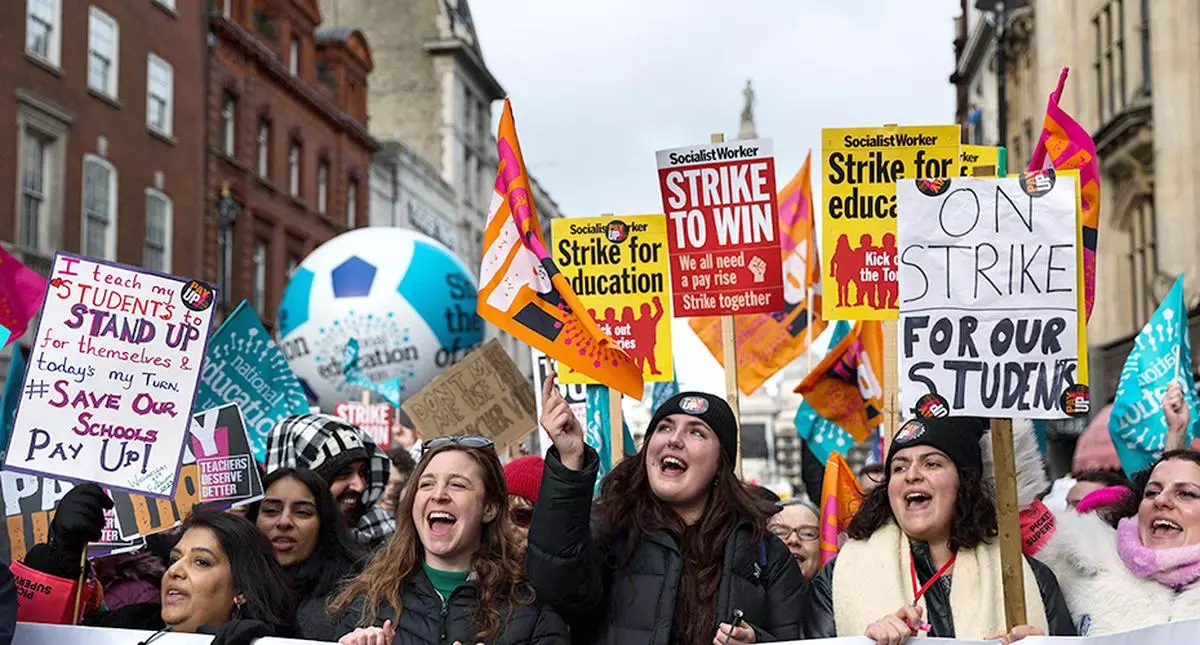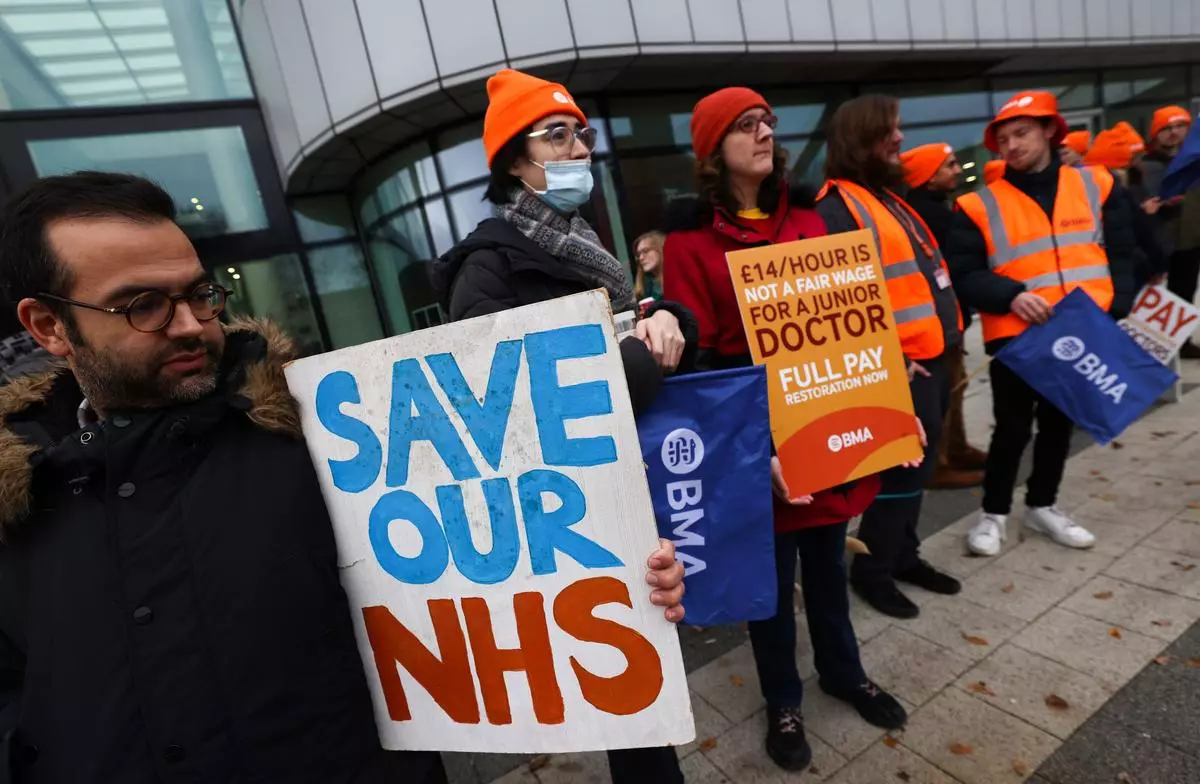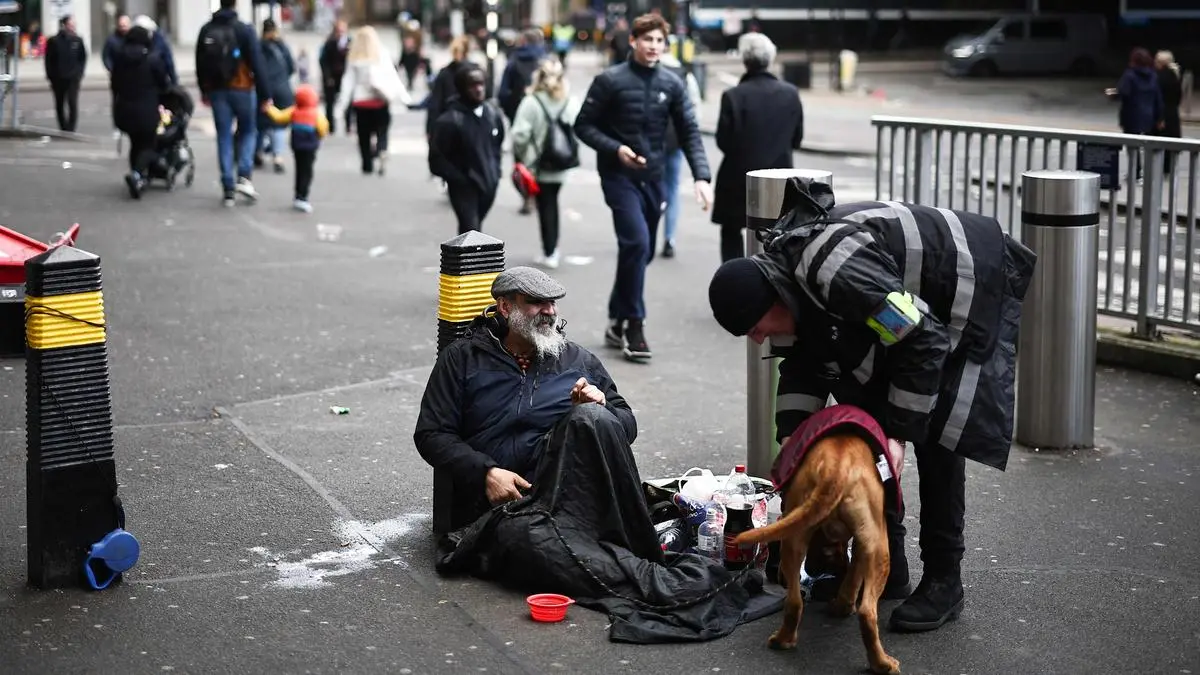The UK has become a country of mass destitution, and but for food banks would almost certainly be one of mass starvation. As many as 11.3 million people, or 14 per cent of the British population, now live in a condition of food insecurity, which means they lack access to sufficient food, or food of sufficient quality, to meet their basic needs.
A parliamentary briefing document states that about 2.5 million people now depend in one way or another on food banks, which in turn depend on donations in cash or in kind; many supermarkets and ordinary high-street shops have collection boxes for food and other basics, as do churches and other faith centres. The Trussell Trust, a major charity that runs food banks and advice services, is now almost a household name, and its 2023 report, Hunger in the UK, makes for bleak reading.
Among all food bank users, families with children are over-represented, as are those who identify as Black or Black British, and those who are homeless or live in rented accommodation; several food banks now provide essential household items as well as food. Recent news reports, furthermore, confirm that people in stable jobs, such as nurses and police officers, are now among their users.
Prince William, Prince of Wales, meets workers during a visit on April 18 to Surplus to Supper, a food distribution charity, in Sunbury-on-Thames in Surrey, England.
| Photo Credit:
WPA Pool/Getty Images
To qualify for food bank help, people have to be referred by doctors or others in particular public services or certain charities. They can also be referred by Jobcentres, the government offices where people register to seek work and receive the bewilderingly complicated and increasingly inadequate forms of state cash benefits. Yet, in what may be an attempt to rig the headline figures, and also looks like an exercise in calculated cruelty, the British government recently decreed that Jobcentre staff must not provide new claimants the detailed information that food banks need in order to assess eligibility. In 2017, the Conservative government introduced a two-child cap on eligibility for benefits; the Labour opposition says it will retain this.
‘Desperate neglect’ of schools
Worse still, in England’s most deprived areas, schools are giving children free breakfasts (some teachers pay for these themselves), washing their clothes in school machines, and even giving some children showers. The Guardian quotes teachers as speaking of “desperate neglect”, with one pupil found begging outside a local supermarket, mothers sleeping with two or three children in the same bed, and homes without heating, with smashed windows, and infestations of mice. Some children are too cold at home to sleep and fall asleep in class. Inevitably, the poor suffer most. (In Scotland, all children in publicly funded schools get free school meals from years 1 to 5, and after that, pupils who meet one or more of a wide range of income- or situation-related criteria get free lunches.)
Also Read | New UK Prime Minister Rishi Sunak gets cheers from unlikely place: India
Early-years malnutrition, which includes the disproportionate consumption of cheaper foods high in fats and sugars, harms cognitive development and physical growth (confirmatory figures have recently been published in the UK) and intensifies susceptibility to the early onset of serious chronic conditions, such as diabetes and heart disease. The independent think tank the Health Foundation notes in two separate publications that since 2011 increases in life expectancy have ceased and even declined among certain groups, among them women in the most deprived 10 per cent of areas. In addition, the gap in life expectancy between the richest and the poorest has increased.
School education and further education, or FE (the counterpart to India’s +2), also show other serious problems, many of which directly affect the classroom. According to a December 2023 parliamentary briefing document, “Teacher Recruitment and Retention in England”, the then total—in England alone—of about 4,68,000 full-time-equivalent teachers in state sector schools means that recruitment targets for graduate teacher-trainees had not been met for a decade, with a shortfall of 38 per cent in 2023-24; pupil-teacher ratios rose from 17 in 2010 to 18 in 2022. The two years most affected by COVID-19 saw a brief rise in recruitment for teacher training, but this did not continue. (The pupil-teacher ratio in Scotland, which has its own education system, is 14.) The National Foundation for Educational Research report for 2024 says teacher supply in England is in a “critical state”.
An additional and serious consequence is that teachers are not staying in the profession. The Education Policy Institute says that in England retention rates for the first 10 years of service are “plunging”, with about 40 per cent of the 2010 cohort of teachers having left by 2020. The leaving percentages are rising at similar rates among head teachers, deputy heads, and classroom teachers in both primary and secondary schools. The current departure percentages for deputy heads, at about 5 per cent, are about a half of those for the other two kinds of posts, but a key factor in departures may well be the inspectorial regime.
The inspections have long been so stressful that a head teacher recently died by suicide over a single bad grading as against three “outstanding” indices. Both Labour and Conservative governments have grossly intensified this crudely reductivist and punitive managerialism. In addition, long-standing and severe restrictions on public-sector salaries mean that even if teachers obtain posts elsewhere, many cannot move because of rocketing house prices and rental rates. Posts remain vacant or are filled, usually temporarily, by supply or relief teachers.

A teachers’ protest in central London, on February 1, 2023. The Education Policy Institute says that in England retention rates for the first 10 years of service are “plunging”, with about 40 per cent of the 2010 cohort of teachers having left by 2020.
| Photo Credit:
ISABEL INFANTES/AFP
One everyday issue many FE teachers face is students’ difficulties with public transport. When doing supply teaching in smaller towns, I now expect about a quarter of my class to be absent until lunch each day. Students immediately message me on the college system when their morning bus does not turn up; the next one is usually not scheduled until two hours or more later. Some computerised attendance registers now include transport issues as acceptable reasons for lateness or absence. On winter afternoons, like many colleagues, I often conclude classes early so that students can get home—which for some is 20 miles (32 km) away—or face another two-hour wait; many then have to walk home along deserted country roads on pitch-dark nights. The term “transport poverty” is at best euphemistic; almost all English bus services were privatised decades ago. An English exception is London; Greater Manchester, for its part, has taken buses and trams back into a form of public ownership (the Scottish capital, Edinburgh, has what looks like a similar arrangement).
Strain on the NHS
As for the single biggest public institution in the UK, the National Health Service, or NHS, which was inaugurated in 1948, it is now under enormous strain after years of structural underfunding despite having long been the most highly valued public institution in the whole country; as Professor Colin Leys pointed out in 2012 and the Health Foundation has also recently confirmed, the service is held in higher esteem even than the royal family.
Yet governments have systematically underfunded the NHS for years, if not decades. In a 2023 article in The Guardian, Denis Campbell points out that the Tory-Liberal Democrat coalition government of 2010-15 cut annual NHS budget rises to 1.1 per cent, with the Tories raising that only to 1.7 per cent in 2015-18. Since then, rises have been 4 per cent, the figure advised by health economists, but this is well below inflation. In contrast, the 1997-2010 Labour government maintained annual average rises of 6.7 per cent (that figure may include Labour’s extensive use of the Private Finance Initiative, the UK version of public-private partnership, for public-sector capital projects, which resulted in heavy repayment bills lasting 25 or 30 years).
Highlights
- As many as 11.3 million people, or 14 per cent of the British population, now live in a condition of food insecurity. About 2.5 million people depend on food banks, which depend on donations in cash or in kind.
- Governments have systematically underfunded the NHS for years, with annual budget rises being cut to 1.1 per cent in 2010-15 and raised only to 1.7 per cent in 2015-18.
- In 2021, 17.5 million people in England were living in “overcrowded, dangerous, unstable or unaffordable housing”. The average residential property price rose eight times the average income in 2021 from four times in 2000.
The consequences of NHS structural underfunding have been extremely serious. For non-emergency hospital treatment, patients must be referred by their general practitioner (GP), and median post-referral waiting times have gone from just over 5 weeks in 2010 to 14.1 weeks in 2023; Campbell adds here that the 2010 figure of 2.6 million patients waiting is now 7.33 million. The British Medical Association states that the latter figure covers 6.32 million people, as some need more than one procedure. Furthermore, face-to-face GP appointments are now increasingly hard to obtain, unlike phone or online consultations, and the spreading use of physician associates, who are not qualified doctors but among other things carry out diagnoses in GP surgeries, has caused at least one fatality resulting from a mistaken diagnosis.
In healthcare as in teaching, staff retention is a major problem. According to the highly respected health think tank The King’s Fund, current unfilled NHS posts number over 1,12,000, or about 8 per cent of the total; the numbers of staff leaving for work-life balance and health reasons have more than doubled in the past decade, and unfilled posts show a fourfold rise, as Campbell notes, from 2.1 per cent in 2010. In addition, foreign doctors working in the NHS have found that visa restrictions prevent them from bringing adult dependants, such as elderly relatives, into the UK; some thousands of doctors are thus affected, and some have left for other countries.

Junior doctors strike on a picket line outside the Queen Elizabeth Hospital in Birmingham, UK, on December 20, 2023.
| Photo Credit:
DARREN STAPLES/Bloomberg
On March 25, The Guardian also reported that 9,000 foreign nurses were leaving the UK every year for better pay and conditions in, for example, Australia and New Zealand; the Royal College of Nursing says the domestic recruitment of nurses is “collapsing”.
The staff’s sense of duty, however, is unquestionable; in 2020, during the first and so far deadliest COVID wave, NHS staff in all categories risked their lives by continuing to work, often wearing plastic garbage bags because the government’s procurement of personal protective equipment was a shambles. Public allegations of corruption and cronyism are still being made.
As for dentistry, the government has reduced funding for NHS patients so severely that very few can get NHS treatment in England. Costs for private treatment are often prohibitive, and some people have resorted to pulling their own and their children’s teeth out with hammers, screwdrivers, and string. Untreated dental problems can have wider health effects, and the tabloid paper Daily Mirror recently carried a cover page headed “Dark Ages Dentistry”.
‘Overcrowded and unaffordable housing’
British education and healthcare are in enough trouble but so is housing, in both physical condition and availability. In 2021, the noted NGO Shelter said that 17.5 million people in England were living in “overcrowded, dangerous, unstable or unaffordable housing”. For those in rented accommodation, no-fault evictions are a constant risk; among a substantial group of Conservative MPs resisting proposed legislation to end such evictions are a number who themselves own and rent out residential property.
Renters have come to fear complaining about widely documented damp (which by generating mould has contributed to fatalities) and dangerous disrepair, because they can be and often are thrown out for complaining, even if the conditions involved breach the law. Unsurprisingly, discrimination is widespread, and occurs on the grounds of disability, race and ethnicity, income, sexual orientation, and single-parent status, or some combination of these.
Also Read | In Britain, the Establishment confronts the Movement
The quality of housing has its own effect on public health and may well play a significant part in the increase—which dates back to before the COVID pandemic—of those aged 16 to 64 who are unable to work on account of long-term sickness. The current long-term sick figure of 2.7 million is just below the late-2023 record of 2.8 million, in a total of about 38 million. As for owning a home of any kind, the average residential property price rose from four times the average salary in 2000 to eight times the average income in 2021. Many local authorities, several of which are close to declaring bankruptcy, have stalled their public house-building programmes but continue to sell housing, usually to private landlords, under right-to-buy law (which holds only in England). The non-profit social housing sector is far behind the annual target of 28,000 homes a year, which the Labour government set in 2000. This sector, according to Shelter, has also seen an annual net loss of 24,000 homes.
Education, health, and housing are three areas in which the public space, the state conceived in a wider sense, has the greatest everyday impact on the lives of all but the very best paid and the wealthiest. It may, nevertheless, be overstating the case to say that in much of the UK these major systems are close to complete collapse even though, as Karam Bales notes, substantial numbers of schools in England and Wales may have to close because they are grossly underfunded. For the noted commentator Chris Grey, the UK is not a failing state—many other states are in far worse condition—but it is an ailing state. Grey mentions a telling short documentary by Annette Dittert for the German station ARD-TV, in which Dittert—who has lived in the UK for many years—says of two northern English cities that she has never seen such despair and hopelessness before.
As for the aggregate figures that so often dominate political-economic discussion (it may not be widely known that Simon Kuznets, who standardised the concept of gross national product, spent decades futilely trying to tell politicians that such indices did not mean what politicians thought they meant), the UK’s GDP makes it the world’s fifth richest country. Nevertheless, as a woman in north-eastern England said to a professor in a 2017 debate on the likely impact of Brexit on the UK: “That’s your bloody GDP, not ours.”
Arvind Sivaramakrishnan is a former Visiting Professor at IIT Madras.


